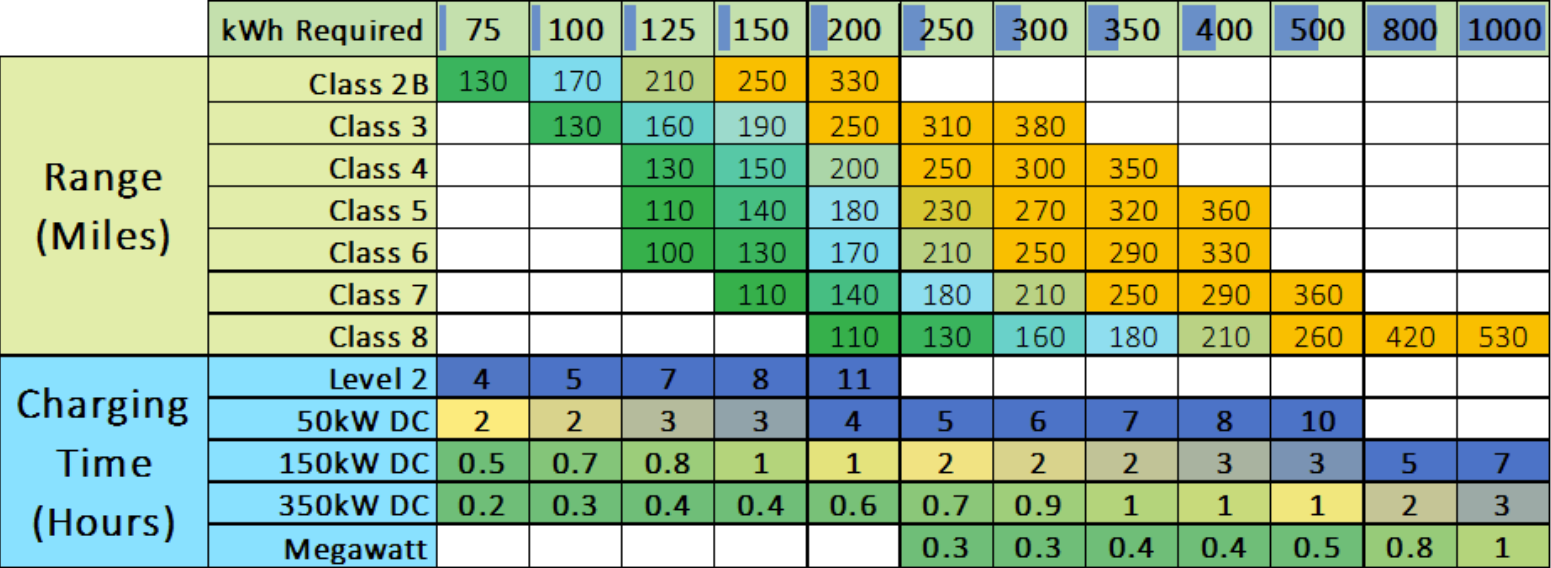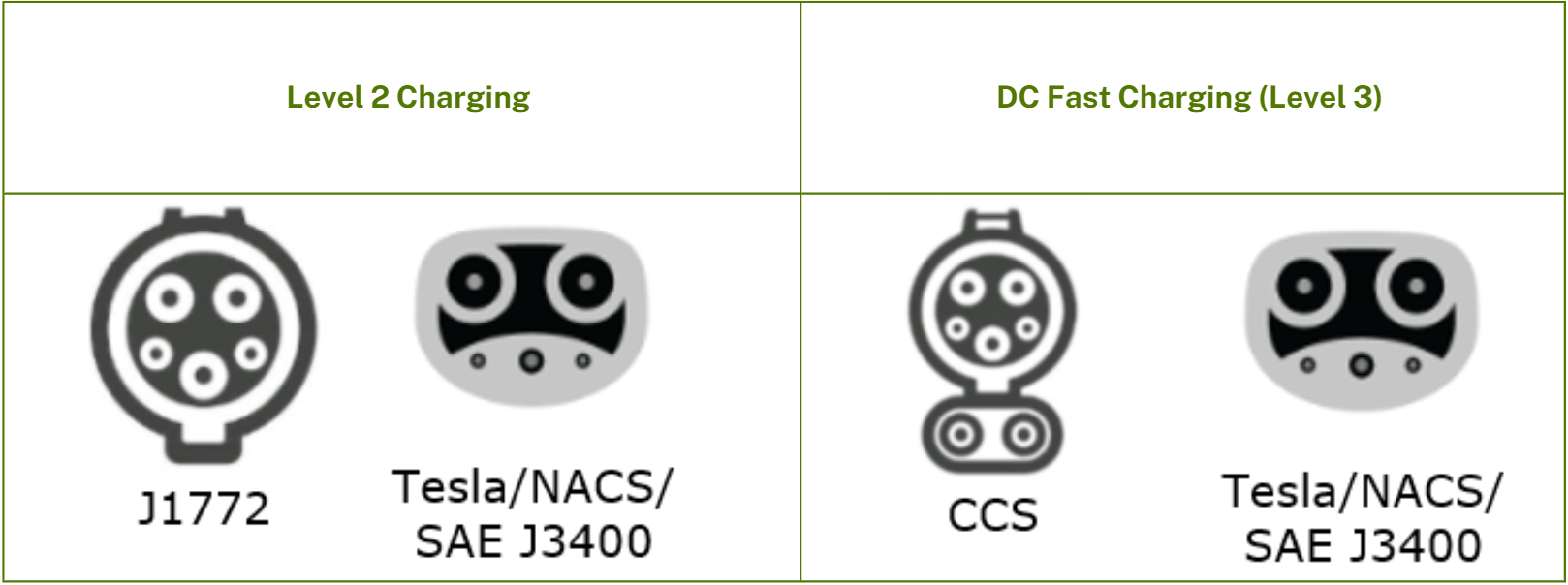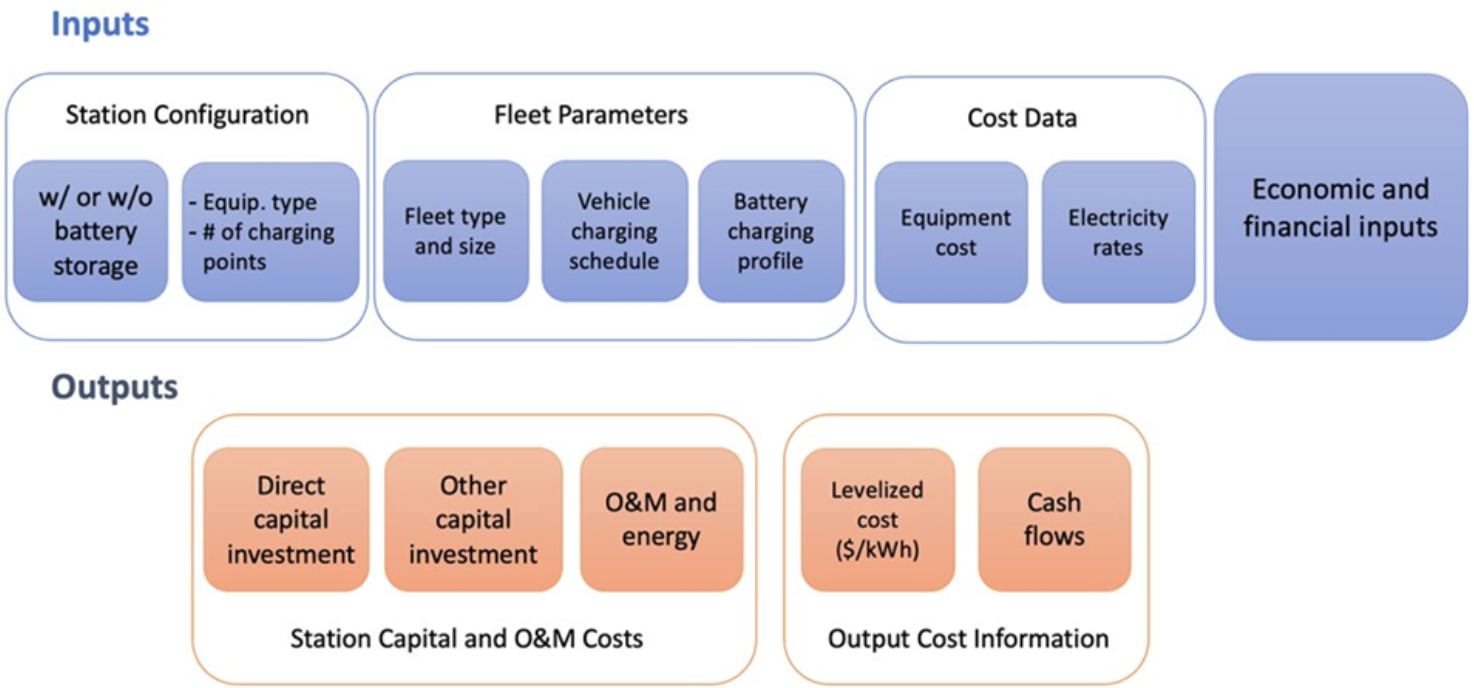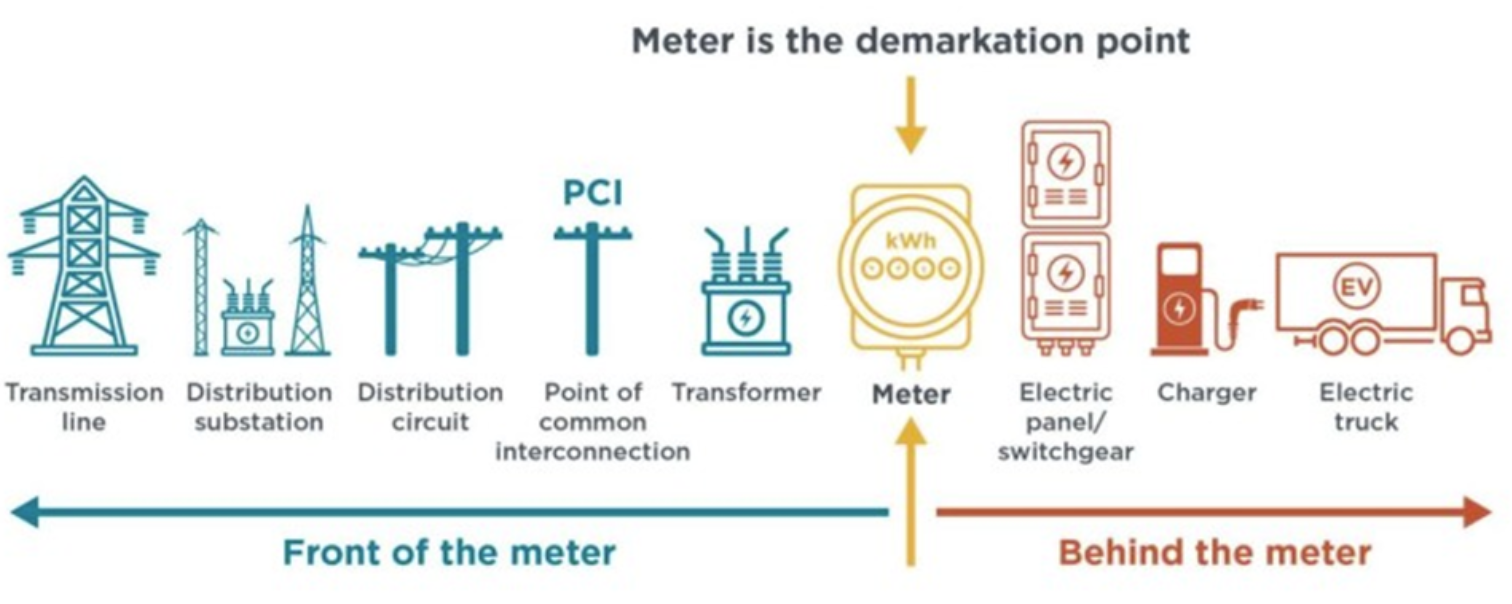
Deep Dive: Charging Infrastructure
Overview
Electric vehicles are a great option for many fleets to help reduce maintenance costs while decreasing emissions. The transition includes upfront planning and decision making, therefore evaluating fleet and operational needs will ease the implementation.
Vehicle electrification may involve coordination with any of the following groups, including utilities, contractors, developers, architects, vehicle manufacturers, and charging station vendors. These groups work with fleets to determine the appropriate type and number of vehicles and charging equipment needed to meet the fleet’s transportation needs. Having one dedicated Level 2 charging port per vehicle is a standard configuration. This allows each vehicle to be charged overnight when electricity costs are low and vehicles are not ordinarily in operation. In certain situations, higher-power chargers may be required to meet the vehicle’s duty cycle. The physical space required to house charging stations in parking areas is a key consideration to include when determining the type and number of charging stations. Charging stations may require new transformers and safety equipment to be installed, which may change a site’s traffic pattern or “flow.”
Charging Equipment
Charging equipment is classified into three primary categories based on the amount and type of power dispensed. The amount of time needed to charge a vehicle will vary depending on the battery’s state of charge (SOC), battery size, the type of battery, and the type of charging equipment. Charging time can range from less than 20 minutes to 20 hours or more, depending on these factors.
Figure 1. Estimated charging times
In addition to choosing the appropriate power level for the charging station, fleets will need to be mindful of matching the correct charging port connector to their vehicle. These connector types are shown in the table below.
Figure 2. Charging Station Connector Types
For medium- and heavy-duty vehicles, Level 2 and DC Fast Chargers are the most common charger types. Level 1 charging stations are also available, however, these are typically used only for passenger vehicles.
| L2 | DCFC | |
| Typical Use Case | Depot charging | Public charging |
| Power Type | AC | DC |
| Voltage | 208V/240V | 350kW or more |
| Power Level | 7.2 - 11.5kW | 50 - 150kW |
| Connector Type (see figure 2) | J1772 or NACS | CCS or NACS |
Most businesses choose to install networked chargers, ensuring that only the fleet’s vehicles can use the chargers. Networked chargers can provide a large amount of technical information including charging duration and rate.
Charging Patterns
Spreading a charging schedule across as many hours as possible will often lead to the lowest upfront and operational cost. Fleets should weigh various operational and cost needs when determining the appropriate charging levels and schedules.
- Managed Charging: Managed charging, sometimes called “smart charging,” entails purchasing charging equipment and vehicles that can actively track and modify charging schedules based on factors such as electricity cost and operational requirements. Managed charging requires a subscription for energy management software provided by the charging station vendor or network provider to keep consumption levels within a predetermined range.
Depending on a site’s electricity rates, pricing often varies throughout the day with higher costs during times of high demand, such as in the late afternoon and evening. Utilizing charge management software takes this guesswork away and automates charging schedules to coincide with vehicle dwell times while minimizing costs. - On-Route vs. Depot Charging: Most commercial EV deployments currently in operation rely solely on depot charging, where a fleet charges their vehicles at a location owned/leased by the organization. This is typically where the vehicles are parked overnight. While future technology developments and policy efforts aim to advance the development of strategically sited on-route charging and public charging hubs, it is recommended that current deployments should include ample planning for on-site charging, where feasible.
The Alternative Fuels Database, provided by the Department of Energy, includes a tool to find publicly available charging stations. Public chargers such as PlugShare, ChargePoint, or EVgo typically require drivers to use a mobile application to pay for and begin their charging session. Fleets can map their daily routes and identify chargers along the way to plan when and where to charge in advance. It is important for fleets to look at the details of on-route chargers, as not all public chargers will work for MHDVs. Most medium- and heavy-duty vehicles will require pull-through spots.
Determining What’s Best for Your Fleet
Selecting charging equipment and a charging schedule
To determine the best charging schedule and equipment for your fleet, the average charging and typical dwell times for each vehicle will need to be determined. The average charging time can usually be found on the manufacturer’s website or specification manual.
The majority of electric medium- and heavy-duty vehicles can be fully charged in 6-10 hours using a Level 2 charger or 1-3 hours using a DC fast charger. As DC fast chargers are significantly more expensive and may require more electric grid infrastructure upgrades to support, it is recommended to consider the vehicle’s needs when selecting the appropriate charging station type. A few examples of applications which may require DC fast chargers are Class 7 or 8 vehicles or vehicles on a 24-hour duty-cycle, such as emergency response vehicles. Talk to your vehicle manufacturer to determine which charger types your vehicle can support.
Argonne National Laboratory’s Heavy-Duty Battery Electric Vehicle Infrastructure Scenario Analysis Model (HEVISAM) tool (pictured below) allows fleets to estimate the cost of charging options under different scenarios to guide decision-making.
Utility Engagement and Infrastructure Planning
It is important to engage with your utility early and often through the fleet transition process, even if you are only starting with one electric vehicle. Some infrastructure upgrades may require utility approval, which can extend project timelines. Your utility can help you plan and may offer incentives and funding . When planning for charging infrastructure, you must consider both behind-the-meter and front-of-meter upgrade costs that may be necessary. An illustration by the International Council on Clean Transportation of these components is below:
Figure 4. Diagram of Infrastructure Costs
Funding programs vary on which front-of-meter or behind-the-meter costs are covered. Visit our Funding & Incentives page to learn more about these programs and to see what your utility offers.
It can be beneficial to have an electrical contractor assess sites where you plan to install fleet charging to determine the current electrical capacity available, how many chargers can currently be supported, and what upgrades may be needed if the existing capacity is not enough. Eligible fleets may qualify for this service for free under the New Jersey Fleet Advisor program. Visit NJDEP| Drive Green NJ | NJ Fleet Advisor to learn more and apply.
Mapping New Jersey’s Medium- and Heavy-Duty Electric Vehicle Charging Infrastructure
The “Medium and Heavy-Duty Electric Vehicle Charging Infrastructure Mapping Tool,” is a comprehensive tool designed to visualize and analyze critical transportation data for fleet management and electric vehicle infrastructure development. It offers users insights into medium-duty and heavy-duty vehicle registrations throughout the State, identifying areas of electric vehicle usage. The application incorporates findings from two Department of Energy studies on freight corridors, allowing users to identify key routes for freight transportation and their implications for electric vehicle integration. Additionally, the Medium and Heavy-Duty Electric Vehicle Roadmap highlights the Board of Public Utilities’ Electric Vehicle charging station awards, showcasing funding opportunities for electric vehicle charging equipment. Furthermore, it displays existing charging hubs, enabling fleet operators and policymakers to pinpoint strategic locations for enhancing infrastructure and improving operational efficiency. Thus, allowing stakeholders to make informed decisions in advancing sustainable transportation initiatives.



